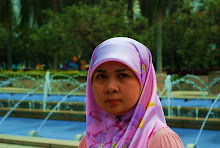Discussion: Science Virtual Experiment
- Using Google, type: "primary school science experiments"
- Firstly; Select: http://www.uq.edu.au/_School_Science_Lessons/ , Secondly; click: Primary science lessons
There is a lot of School Science Lesson to choose from For Year 1 to Year 6.
Class Discussion
If students used the wrong word then the concept would be wrong. Such as the word "produced" and "released".
He also explained at Year 3, pupils can use more vocabularies other than only using labelling in teaching. the info from www.uq.edu.au/_School_Science_Lessons
3.6. Care of cats
See diagram 9.309: Care of cats
Be able to care for a pet cat.
You will need a pet cat or kitten to the classroom. Cats are good pets because they are friendly animals and they kill mice and rats. However, they also kill native birds, so cats should be cared for and not allowed to go wild in the bush. Cats should be fed food scraps and have clean water. They should have a dry place to sleep and be allowed to wander about at night.
1. Show the cat to the children. Look at the cat carefully. What can they see? [The cat has a round head, short neck, narrow body, long flexible tail, covered with hair, narrow nostrils, big eyes, eye lashes, long whiskers, large external ears that can turn to catch sound, has canine teeth, 4-5 pairs of teats in female, hair falls out and is replaced, when angry the hair stands on end.]
2. Pick up the cat by the back of its neck. Look at the feet of the cat, what can you see? [There are the pads on the foot and on the toes. It has claws that can be pulled in.] Why can it pull in its claws? [It pulls in its claws to walk and not wear out the claws.]
3. Look at the cat walking. Can it walk in a straight line? [Yes, it can walk side to side in a straight line.]
4. Stroke the cat to make it purr. Can they make the same purring sound?
Extra Activity: Look at the eyes of the cat at different times of day and night. Can you tell the time by their eyes during the day? [The pupils of the cats' eyes are large at night and become a slit in the day.] Do cats eyes shine in the dark? [Cats' eyes reflect light but they do not shine by themselves.]
Some discussion:
Lecturer: Which animal has a bigger head than yours?
(give some clues, such as 'd', 'i'~ the pupils will answer 'dinosaur')
Lecturer: Which animal has the smallest brain?
(give some clues to expand pupils vocabularies)
What does it mean to have a bird brain?? :) It means to have a small brain. Are tails useful? dont only ask about eyes, what are the purpose of a tail?
If on a plane, it uses a rudder to help it change directions
An interesting question: Do fish have ears? Fish detects vibrations...
Things to do, to understand our world & ourselves.
For lower primary pupils they usually are given oral questions, do some matching activities, completing sentences activities
How do we assess pupils work? How do we know that pupils are really learning?
Year 1
- ask questions orally andand written work (maybe the last 6 months)
e.g by labelling such as put the word on top and then pupils shoul be able to recognise which word goes where
Year 2
- By filling in the blanks with words given
Year 3
- By filling in the blanks without words given
Year 4
- More difficult and stimulate thinking than Year 3, such as "I have two ears for ___________
Year 5 & Year 6
- For Year 5,pupils can practice writing their own sentences. For example provided with a picture, pupils can write sentences from the picture.
- For Year 6 pupils by now should be able to write sentences from pictures and write reasons.

0 comments:
Post a Comment